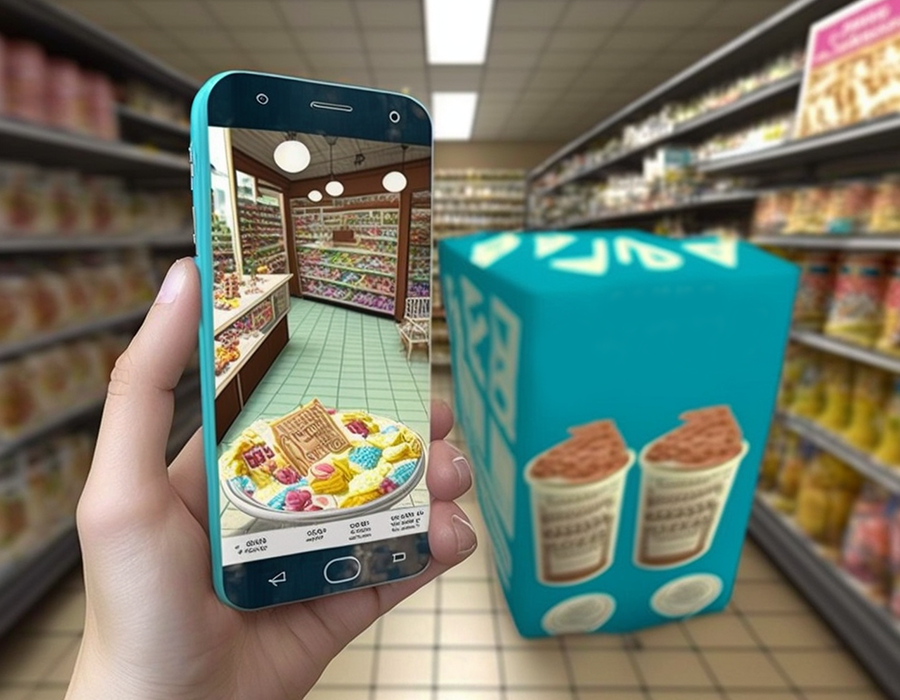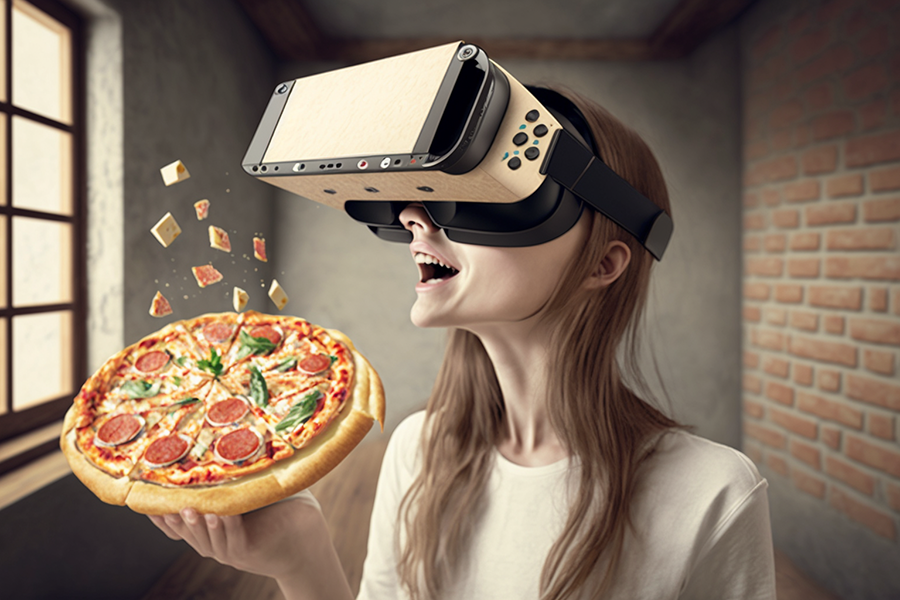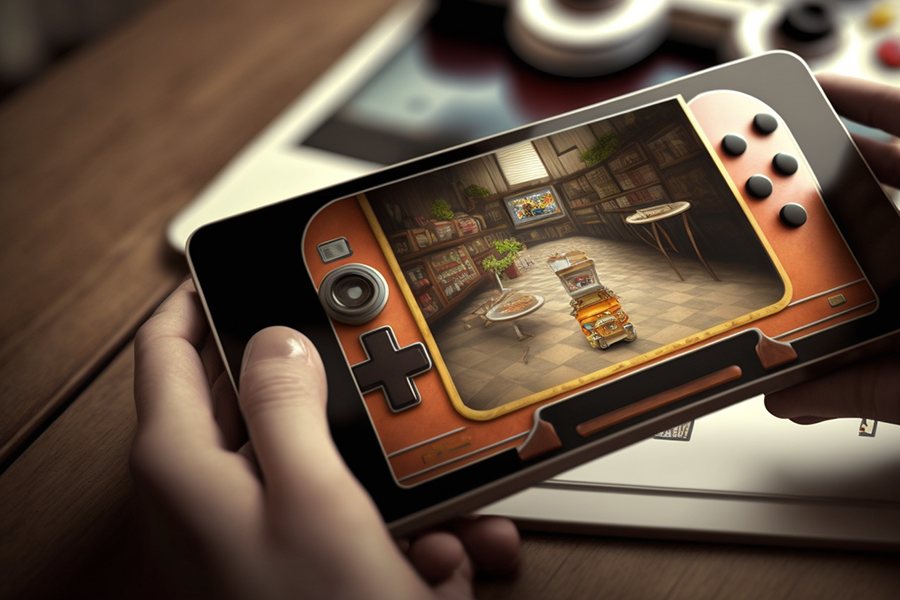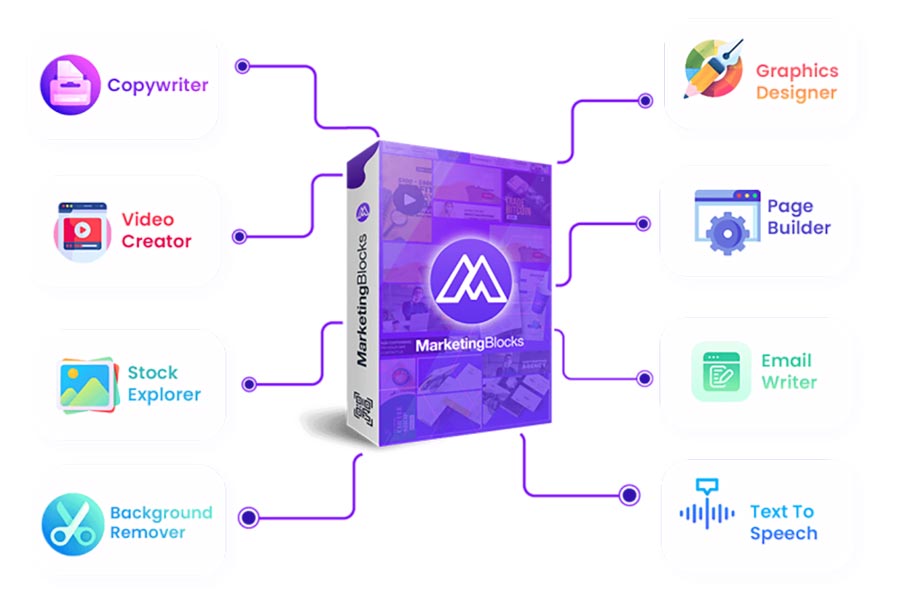Revolutionising Marketing with Virtual & Augmented Reality

Introduction
Virtual and augmented reality have revolutionised how marketers connect with their target audiences. These immersive technologies offer exciting opportunities to engage customers, create memorable experiences, and enhance brand loyalty. As technology advances, the marketing industry embraces the power of virtual and augmented reality to stay ahead of the game.
With the rise of e-commerce and social media, businesses rely more on technology to connect with customers. To create a superior customer experience, businesses turn to virtual and augmented reality to deliver personalised and interactive content.
“69% of companies say that they are competing based on customer experience.”
— Salesforce
This blog will explore the growing importance of virtual and augmented reality in the marketing industry. We will discuss the benefits of using these technologies in marketing campaigns, share examples of successful campaigns, and analyse the challenges and limitations of using these technologies. Additionally, we will compare and contrast virtual and augmented reality, explore emerging trends in virtual and augmented reality marketing, and discuss the future of these technologies in the marketing industry.
Overall, this blog aims to provide readers with a comprehensive understanding of the role of virtual and augmented reality in marketing and how businesses can leverage these technologies to enhance customer engagement and drive growth.
Virtual Reality in Marketing
Virtual Reality (VR) is a technology that generates a simulated environment that users can engage with through a headset or other similar devices. One of the applications of virtual reality in marketing is to create immersive experiences which allow customers to interact with products or services in novel and stimulating ways.
One of the main benefits of using virtual reality in marketing is that it creates a memorable and immersive experience that can increase customer engagement and brand awareness. Customers can interact with products or services in a virtual space, explore features and functionalities, and experience the benefits of the product or service in a way that cannot be replicated through other mediums.
Several companies have successfully used virtual reality in their marketing campaigns to create memorable and immersive experiences. For example, one of the European car manufacturers used virtual reality to launch their new model. The campaign allowed customers to experience the car’s features, including its safety features, in a virtual test drive. This campaign increased customer engagement and generated buzz and media coverage, making it a highly successful marketing campaign.

However, there are also some challenges and limitations to using virtual reality in marketing. One of the main challenges is the high cost of producing high-quality virtual reality experiences. It requires expensive hardware and software, as well as the expertise of experienced professionals. Not all customers have access to the necessary technology or may hesitate to use it.
Another challenge is the limited scalability of virtual reality experiences. Unlike other marketing channels, such as social media or email, virtual reality experiences cannot be easily distributed to a large audience. This can limit the reach of virtual reality marketing campaigns and make it difficult to measure their effectiveness.
Despite these challenges, virtual reality continues to be a popular and effective tool for marketing, particularly in industries such as automotive, real estate, and tourism, where immersive experiences can significantly impact customer engagement and purchasing decisions. As technology advances and becomes more accessible, businesses will likely incorporate virtual reality into their marketing strategies.
Augmented Reality in Marketing
Incorporating digital information into the physical environment through smartphones, tablets, or other devices is the essence of Augmented Reality (AR) technology. When applied to marketing, AR can produce immersive and interactive experiences that merge the real and digital worlds.
One of the main benefits of using augmented reality in marketing is that it provides customers with an immersive and interactive experience that can increase engagement and retention. In addition, by overlaying digital information on the physical world, augmented reality can provide customers with a unique and personalised experience that can increase their interest and understanding of a product or service.
Several companies have successfully used augmented reality in their marketing campaigns to create engaging experiences. For example, Ikea’s augmented reality app allows customers to visualise how furniture will look in their homes before purchasing. This feature allows customers to see how the furniture will fit in their space, making it easier to make purchasing decisions.
“49% of consumers believe that augmented reality would improve their shopping experience.”
— Accenture
However, using augmented reality in marketing also has some challenges and limitations. One of the main challenges is the need for a high-quality user experience. To be compelling, augmented reality experiences must be easy to use and understand and provide clear and valuable information to the customer. On the other hand, poorly designed or executed augmented reality experiences can have the opposite effect, leading to frustration and disengagement.
Another challenge is the need for the technological infrastructure. Augmented reality experiences require sophisticated software and hardware, which can be expensive and challenging to implement. In addition, not all customers have access to the necessary technology or may hesitate to use it.
Despite these challenges, augmented reality continues to be a popular and effective tool for marketing, particularly in industries such as retail, fashion, and entertainment, where personalised and interactive experiences can significantly impact customer engagement and purchasing decisions. As technology advances and becomes more accessible, we will likely see more businesses incorporating augmented reality into their marketing strategies.
Virtual and Augmented Reality: A Comparison
While virtual reality (VR) and augmented reality (AR) offer immersive experiences, they differ in their approach and application in marketing. In this section, we will compare and contrast virtual and augmented reality in marketing, analyse their strengths and weaknesses, and discuss which technology is more suitable for different types of marketing campaigns.
Virtual reality creates a fully immersive digital environment that allows customers to interact with products or services in a virtual space. For example, virtual reality can create simulations, games, and training experiences. In contrast, augmented reality overlays digital information onto the physical world, providing customers with a more interactive and personalised experience.
One of the main strengths of virtual reality is that it provides customers with a fully immersive and interactive experience. As a result, this technology allows customers to experience products or services in a way that cannot be replicated through other mediums, which can be particularly effective in industries such as automotive, real estate, and tourism.
On the other hand, augmented reality offers a more interactive and personalised experience that can increase customer engagement and retention. This technology allows customers to overlay digital information onto the physical world, making visualising products or services in their environment easier. Augmented reality can be particularly effective in the retail, fashion, and entertainment industries.
“The use of virtual and augmented reality in marketing campaigns can increase customer engagement by up to 70%.”
— A Study, SuperData Research
Despite their strengths, both virtual and augmented reality have some areas for improvement in marketing. For example, virtual reality can be expensive to produce, and not all customers can access the necessary hardware and software to experience it. Additionally, virtual reality experiences can be limited in scalability, making reaching a large audience difficult.
Augmented reality experiences, on the other hand, require sophisticated software and hardware to create a seamless user experience. As a result, poorly designed or executed augmented reality experiences can have the opposite effect, leading to frustration and disengagement.
When choosing between virtual and augmented reality for marketing campaigns, businesses should consider their goals and the needs of their target audience. For example, virtual reality may be more suitable for industries that require a fully immersive experience. In contrast, augmented reality may be more effective in sectors where personalised and interactive experiences are necessary.
All in all, virtual and augmented reality present compelling opportunities for marketers to create unforgettable and captivating customer experiences. With an understanding of the advantages and limitations of each technology, businesses can make informed decisions about how best to integrate virtual and augmented reality into their marketing strategies.
Emerging Trends in Virtual and Augmented Reality Marketing
As technology advances, virtual and augmented reality become increasingly important marketing tools. This section will discuss the latest trends and innovations in virtual and augmented reality marketing, analyse how these trends change the marketing industry, and provide examples of how businesses use these emerging technologies to create successful marketing campaigns.
Social VR and AR: One emerging trend in virtual and augmented reality marketing is the use of social VR and AR experiences. Social VR and AR allow customers to interact with others in a virtual or augmented space, creating a more engaging and personalised experience.
Personalised AR: Experiences Another trend in augmented reality marketing is using personalised AR experiences. With data and artificial intelligence, businesses can create personalised AR experiences tailored to customers’ preferences and interests.

Gamification: Gamification is another trend in virtual and augmented reality marketing gaining popularity. Businesses can create engaging and memorable customer experiences by incorporating game elements into marketing campaigns.
These emerging virtual and augmented reality marketing trends are changing how businesses approach marketing campaigns. As a result, companies can increase customer engagement and retention by creating more personalised, interactive, and engaging experiences, ultimately driving sales and revenue.
Businesses are succeeding by incorporating virtual and augmented reality into their marketing strategies. By staying up-to-date with these technologies’ latest trends and innovations, companies can create successful marketing campaigns that resonate with their customers and drive growth.
The Marketing Industry’s Future with Virtual and Augmented Reality
With the continuous advancement of virtual and augmented reality technologies, their impact on the marketing industry is becoming more significant. In this section, we will explore the potential implications of these technologies for the future of marketing, examine their anticipated evolution in the years to come, and consider how businesses can best prepare themselves for integrating virtual and augmented reality into their marketing strategies.
Increased Personalisation: One potential impact of virtual and augmented reality on the future of marketing is increased personalisation. Businesses can use data and artificial intelligence to create highly personalised virtual and augmented reality experiences tailored to customers’ preferences and interests. This level of personalisation can increase customer engagement and retention, ultimately driving sales and revenue.
Enhanced Customer Engagement: Virtual and augmented reality also have the potential to improve customer engagement in ways that are not possible through other mediums. These technologies can create immersive and interactive experiences that allow customers to engage with products or services in new and exciting ways, ultimately increasing their interest and understanding of the product or service.
“The market for Virtual and Augmented Reality in the enterprise sector will reach $95 billion by 2025.”
— A Study, Goldman Sachs
Integration with Other Technologies: In the coming years, virtual and augmented reality will likely continue to evolve and develop with other technologies, such as artificial intelligence, machine learning, and the Internet of Things. This integration will allow businesses to create even more personalised and engaging virtual and augmented reality experiences for their customers.
To prepare for the future of virtual and augmented reality in marketing, businesses should start by understanding their customers’ preferences and interests. By understanding their customers, businesses can create personalised virtual and augmented reality experiences that resonate with them and drive engagement. Additionally, businesses should invest in the necessary hardware, software, and expertise to create high-quality virtual and augmented reality experiences that are both scalable and cost-effective.
Overall, virtual and augmented reality can potentially transform the marketing industry excitingly. By staying up-to-date with the latest trends and innovations in these technologies, businesses can create successful marketing campaigns that resonate with their customers and drive growth in the years to come.
Conclusion
Virtual and augmented reality rapidly changes the marketing industry, offering businesses new and exciting ways to engage with customers. In this article, we have discussed the definition and workings of virtual and augmented reality, the benefits and limitations of using them in marketing, emerging trends, and the potential impact of these technologies on the future of marketing.
Virtual and augmented reality offer several benefits to businesses, including increased customer engagement, retention, and personalisation. However, they also have limitations and challenges, such as the need for high-quality user experiences and technological infrastructure.
As technology advances, we expect to see more innovative uses of virtual and augmented reality in marketing, such as social VR and AR experiences, personalised AR experiences, and gamification. These emerging trends will continue transforming the marketing industry, providing businesses with new opportunities to engage with customers and drive growth.
In conclusion, virtual and augmented reality are powerful tools for marketing that offer a unique and immersive way to engage with customers. By understanding the benefits and limitations of these technologies, businesses can make informed decisions about how to incorporate them into their marketing strategies. Additionally, as technology continues to evolve, businesses must stay up-to-date with the latest developments to remain competitive and provide the best possible experience for their customers.
Be sure to check out our other related posts if you enjoyed this one:
- Supercharge Your Business: Mastering Cross-Channel Marketing Magic!
- Influence: The Psychology of Persuasion by Robert B. Cialdini – A Word Marketing Book Summary
- Building Trust: Brand Awareness & Reputation
- Unlocking Success: Data-Driven Targeted Advertising
- The AI Revolution: Transforming Marketing & Advertising
- Introducing Our New and Improved Dewalist Marketplace Design
- Ad Ethics: Balancing Persuasion with Responsibility
- Email Showdown: Mandrill vs Mailchimp Features
- The Future of Digital Out-of-Home (DOOH) Advertising
- Small Business Local SEO: Unleash the Power to Boost Growth
Sign up for updates on this blog and our latest marketing posts if you enjoyed reading this one.
Share our blog content with your friends and colleagues via Facebook, Twitter, Pinterest, LinkedIn, email or WhatsApp links below and help them stay informed about the latest insights on business, marketing, finance, lifestyle, and society. Let’s build a knowledge-sharing community and empower each other to achieve and experience our goals.
Credits
- Featured image by MidJourney.
- Virtual Reality in marketing image by MidJourney.
- Emerging trends in Virtual and Augmented Reality marketing image by MidJourney.









